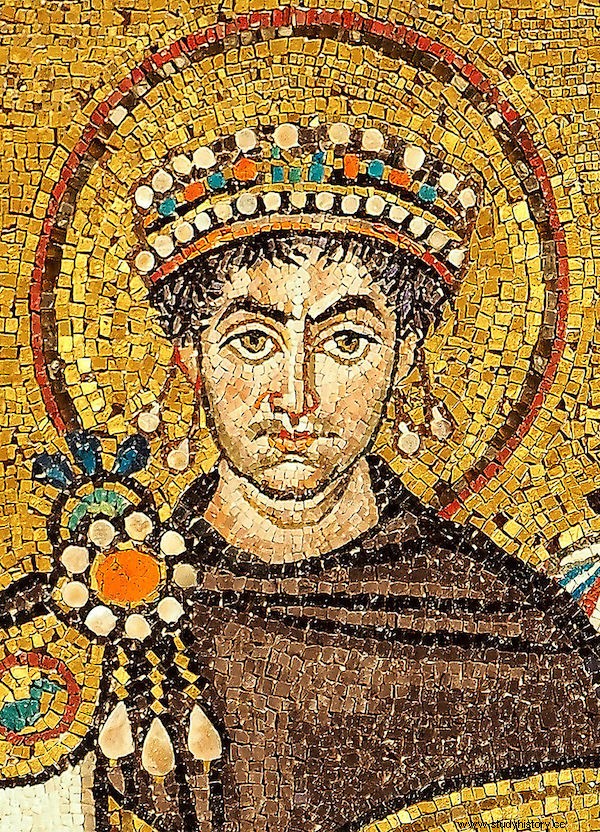Justinian, of low birth, was not at all appointed to the throne. His uncle, a peasant like him, joined the corps of Excubites (personal guard of the Byzantine Emperor) in Constantinople. He calls his nephew Justinien in order to offer him an education. And because the Emperor Anastasius had hardly planned for a succession, Justin saw himself brought to the throne and decided to associate Justinian with power, who became his adopted son. The latter is therefore ready to govern when his uncle dies.
527-565

Characters
Justinian
John of Cappadocia
Belisarius
Theodora
Procedure
Justinian acceded to the throne in 527 and wished to reunite the then Great Roman Empire, divided between the western part and the eastern part. Also he legislates and creates the Justinian code (529) which will be increased in 534 (Novelles ) in order to give legal unity to the entire Empire. In addition, he bought the peace of the Persians (532) who threatened his reign since 529, to carry out his ambitions. On the interior side, he almost lost his throne and put down an uprising of the population (Nika sedition) in 532 thanks to his wife Theodora and Bélisaire, general of the army.
He launched great conquests and reconquered North Africa against the Vandals, Carthage then Corsica, Sardinia, Sicily, Italy against the Ostrogoths, part of Spain, etc. If some territories are missing, such as Gaul, compared to the Great Empire of the time, the Mediterranean rim is again Roman. Justinian, not content with being a legislator and a conqueror, is also an urban planner. Also, he rebuilds the city of Antioch (526-528) and builds the Basilica of Saint Sophia in Constantinople (532-537) on the ashes of the old church burnt down during the Nika insurrection. Many churches, cities, strongholds, walls, roads, bridges, thermal baths are born. He also reformed the administration, applied by his prefect of the praetorium (minister) Jean de Cappadoce. At the economic level, trade is developing; trade routes to China resumed as well as to Gaul. Justinian fights against paganism (religion other than Christian) and the Christianity he defends extends to the Caucasus and the Black Sea.
But in foreign policy, the war resumed and, despite the peace agreement, the Persians attacked in 540. The bad harvests combined with the plague (542-544) which decimated a large part of the population undermined population growth as economic. Religious unrest resumes between supporters of the Council of Chalcedon who believe in the divine and human nature of Christ (like the official Church) and the Monophysites who believe only in the divine nature of the Son (Jesus). Justinian convenes a council in Constantinople (553) but the parties are irreconcilable. Gentiles are excluded. The end of Justinian's reign is therefore more contrasted.
Consequences
At the death of Justinian, the different peoples, Persians, Lombards, Visigoths etc. invade the borders and retake their territory. From then on, failing to have reunified the great Roman Empire in the long term, the Emperor Justinian defined or confirmed the religious, economic, legal, political and cultural bases of what was the Byzantine Empire.
